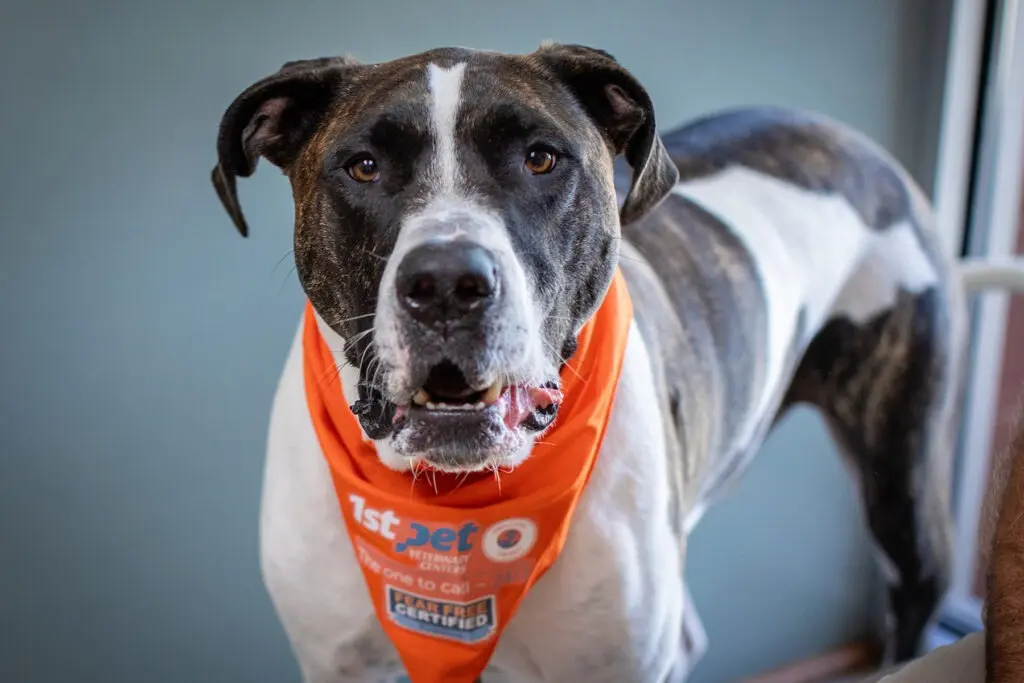Bloat is a serious and potentially life-threatening medical condition in dogs. As a responsible and loving pet owner, be aware of this condition and its symptoms so that you know what to do if your dog ever develops this problem.
What Is Bloat or GDV?
Bloat, or gastric dilatation-volvulus (GDV), is a stomach condition. If a dog develops bloat, then its stomach basically twists. During the initial gastric dilation stage, the dog’s stomach fills up with too much gas, food, or fluid. The stomach has to expand to hold this extra volume. Sometimes, this expansion makes it twist out of position.
If bloat progresses, then it moves into the volvulus stage. Here, the twisted stomach can’t expel its excess gas, food, or fluids. They become trapped inside and create dangerous pressure levels.
This pressure can cut off the blood supply to the stomach, causing tissue damage. It also affects the flow of blood from the back of the dog’s body to the heart. If blood can’t flow normally, then the dog might go into shock and die. A twisted stomach also sometimes affects blood supply to other organs such as the spleen and pancreas. If the pancreas doesn’t get enough oxygen from blood, then it might release toxic hormones that can stop the dog’s heart.
While some dogs, such as large and deep-chested breeds, are more likely to get bloat than others, this condition can strike any dog. Bloat doesn’t have obvious causes, but it sometimes happens if a dog eats and drinks too much too fast or exercises immediately after a meal. Older and overweight dogs might also be more likely to develop this condition. Plus, if your pet has a family history of bloat, then it might be at a higher risk. We see this more in anxious dogs that those that are calm and intact (non-neutered) and male dogs are at a higher risk than females. Feeding your pet one large meal per day may put them at more risk as well, so it is likely best to feed your pet two to three smaller meals.
What Are the Symptoms of Bloat?
One of the first signs that your dog might have bloat is a change in its behavior. It might be restless and unable to settle down, or it might be more sleepy/lethargic than expected. It might pace around. If it tries to sit or lie down, then it will look uncomfortable. You might also notice that your dog’s stomach looks bigger than usual. It might feel hard when you touch it, and your pet might show signs of pain if you do touch the area. Your dog might drool a lot and try to vomit. However, it won’t actually be able to do this. It will retch or dry-heave. Its stomach’s twisted position doesn’t allow the stomach to empty, so if you see your pet trying to vomit but unable to, they should be brought in as soon as possible (on an emergency basis/not waiting for a scheduled appointment). As bloat progresses, your dog might start to show signs of going into shock. For example, its breathing rate might be fast and shallow, but its pulse will slow down.
How Is Bloat Treated?
If your dog does develop bloat, then early intervention improves its outcome. In some cases, your vet can remove some of the buildup in its stomach to relieve the pressure. They might also be able to untwist the stomach before it causes more serious damage.
Your dog is likely to need surgery if it does have a serious case of bloat. As well as repositioning its stomach, your vet might need to remove damaged tissue and part or all of the spleen. Your pet will then need a few days of intensive post-surgical care.
If your vet thinks that your dog’s bloat has an identifiable cause, then they can help you reduce the risk of it happening again. For example, you might need to change your dog’s diet and the way it eats and drinks. You can also do a preventative surgery to prevent bloat from happening, called a gastropexy (which is often done at the same time as their spay and neuter to decrease the number of surgeries your pet would need in total).
If your dog shows symptoms of bloat, then you need emergency help. Any delay could be life-threatening. For a fast diagnosis and treatment, contact 1st Pet Veterinary Centers.

